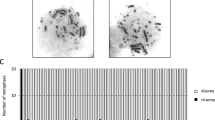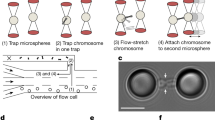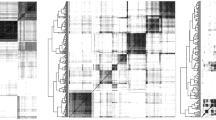Abstract
SEVERAL years ago the hypothesis was put forward that in œnothera new species have arisen through crossing and been perpetuated by the chromosome linkage which, it was assumed, had arisen as a result of crossing between unrelated species (Gates, 1928).1 It has recently been possible to test this hypothesis experimentally, with results which show that chromosome linkage (catenation)2 can arise when species or mutants showing no catenation are crossed together.
This is a preview of subscription content, access via your institution
Access options
Subscribe to this journal
Receive 51 print issues and online access
$199.00 per year
only $3.90 per issue
Buy this article
- Purchase on SpringerLink
- Instant access to full article PDF
Prices may be subject to local taxes which are calculated during checkout
Similar content being viewed by others
References
Zeit.für Abst. u. Vererb. Suppt. Vol., p. 752. Bibligraphia Genetica, vol. 4, p. 480.
Gates, "The Cytological Basis of Mutations", Amer. Naturalist, vol. 65, p. 97; 1931.
See Gates and Goodwin, Proc. Roy. Soc., B, in press.
Author information
Authors and Affiliations
Rights and permissions
About this article
Cite this article
GATES, R., CATCHESIDE, D. Origin of Chromosome Linkage in œnothera. Nature 128, 637 (1931). https://doi.org/10.1038/128637a0
Issue date:
DOI: https://doi.org/10.1038/128637a0
This article is cited by
-
Cytogenetical studies in Oryzeae and Phalarideae
Journal of Genetics (1938)
-
Chromosome catenation in someF 1 Oenothera hybrids
Journal of Genetics (1933)
-
Gamolysis of various new Oenotheras
Journal of Genetics (1932)



